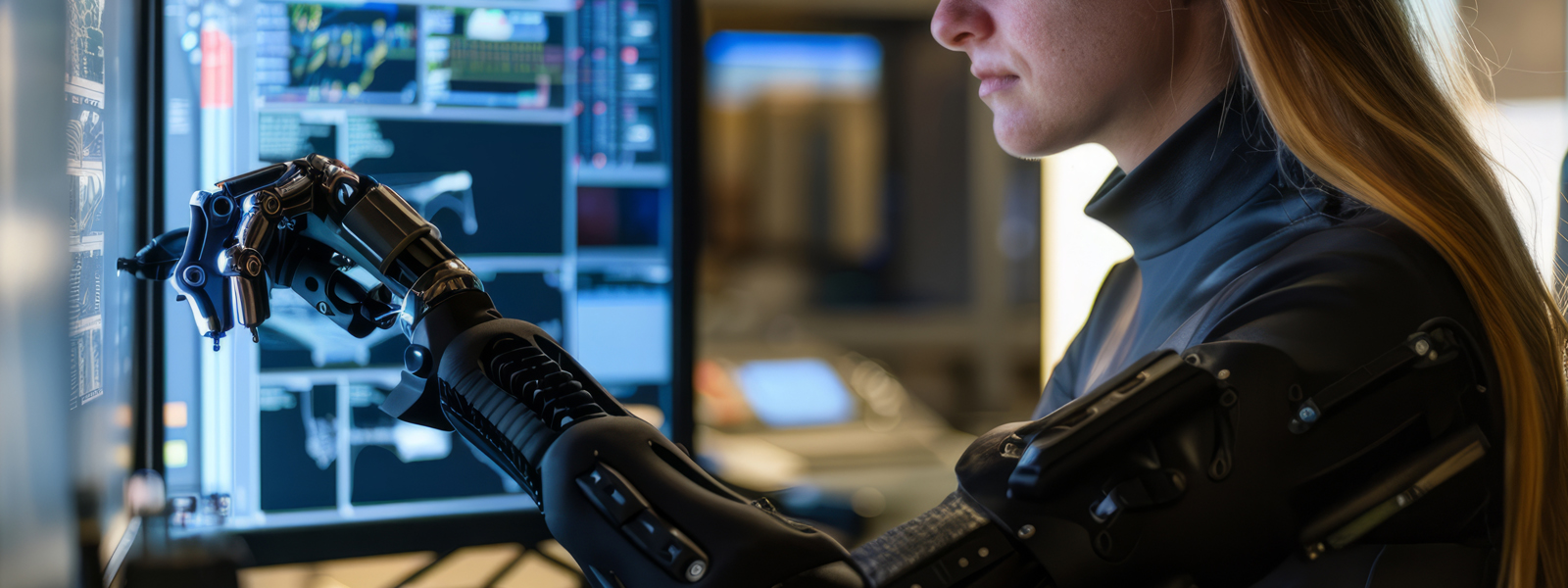AGP China Technology Report - Exoskeletons & Wearable Robotics
Table of Contents
Page Section
03 Technology Overview
06 Historical Development Timeline
09 Product Differentiation
15 China Technology Ecosystem
18 Sino-Foreign Collaboration
20 Common Applications In China
25 Government Policy Support
28 Impact On Market Incumbents
30 Final Conclusion
31 Appendices
1.1 Global Snapshot
Definition and Classification
Exoskeletons and wearable robotics are external, wearable devices designed to augment human strength, endurance, and mobility. These systems can be categorized into:
- Powered Exoskeletons: Equipped with motors or actuators to assist movement.
- Passive Exoskeletons: Rely on mechanical structures without active power sources.
Key Technologies
The functionality of exoskeletons hinges on several core technologies:
- Actuators: Provide movement through electric, hydraulic, or pneumatic systems.
- Sensors: Monitor user movements and environmental conditions to inform device responses.
- Control Systems: Utilize algorithms and software to interpret sensor data and manage actuator functions.
- Power Supply: Typically involve rechargeable batteries, with ongoing research into energy efficiency and longevity.
Global Market Overview
The global wearable robotic exoskeleton market has experienced significant growth:
- Market Size: Valued at approximately USD 1.24 billion in 2023, projected to reach USD 14.67 billion by 2030, with a CAGR of 42.2% during the forecast period.
- Key Players: Notable companies include Ekso Bionics, ReWalk Robotics, Cyberdyne, and Hocoma.
- Applications: Predominantly in healthcare for rehabilitation, with expanding use in industrial sectors to enhance worker productivity and safety.
Technological Advancements
Recent developments have focused on:
- AI Integration: Enhancing adaptability and user experience through machine learning algorithms.
- Material Innovation: Utilizing lightweight composites to improve comfort and reduce fatigue.
- Energy Efficiency: Advancements in battery technology to extend operational duration.
1.2 China Snapshot
Market Position and Growth
China's wearable robotic exoskeleton market is expanding rapidly:
- Market Size: Estimated at USD 1.23 billion in 2023, with projections reaching USD 41.48 billion by 2033, reflecting a CAGR of 42.17%.
- Domestic Capabilities: Significant advancements in core components such as actuators and control systems, with companies like Fourier Intelligence and RoboCT leading innovations.
Leading Firms and Deployments
Prominent Chinese companies include:
- Fourier Intelligence: Specializes in rehabilitation exoskeletons for medical applications.
- RoboCT: Focuses on industrial exoskeletons to assist workers in manufacturing settings.
Deployments span across:
- Healthcare: Rehabilitation centers utilizing exoskeletons for patient mobility recovery.
- Industrial: Factories implementing wearable robotics to reduce worker fatigue and injury.
National Policies and Industrial Targets
The Chinese government has introduced policies to bolster the robotics industry:
- MIIT Initiatives: The Ministry of Industry and Information Technology's "Guiding Opinions" aim to enhance innovation and application of robotic technologies.
- Made in China 2025: A strategic plan emphasizing the development of high-tech industries, including robotics.
Cost-Performance Edge and Application Scaling
China's competitive advantages include:
- Manufacturing Efficiency: High production capabilities leading to cost-effective solutions.
- Market Demand: Aging population and industrial growth driving the need for assistive technologies. Alignment with National Goals
Exoskeletons contribute to:
- New Productive Forces: Enhancing labor efficiency and safety.
- Demographic Shifts: Addressing challenges posed by an aging workforce.
- Industrial Upgrading: Facilitating the transition to smart manufacturing and automation.
1.3 Market Size
Global Market Estimates
Various forecasts highlight the market's growth trajectory:
- Fortune Business Insights: Projects growth from USD 1.24 billion in 2023 to USD 14.67 billion by 2030, at a CAGR of 42.2%.
- Market Research Future: Estimates an increase from USD 3.18 billion in 2023 to USD 14.94 billion by 2032, with a CAGR of 18.75%.
- Stratistics MRC: Anticipates growth from USD 1.92 billion in 2023 to USD 11.77 billion by 2030, at a CAGR of 29.5%.
China-Specific Estimates
China's market is poised for substantial growth:
- Spherical Insights: Forecasts an increase from USD 1.23 billion in 2023 to USD 41.48 billion by 2033, with a CAGR of 42.17%.
Growth Scenarios
Potential growth trajectories include:
- High: Rapid adoption driven by technological advancements and supportive policies.
- Medium: Steady growth influenced by gradual market acceptance and infrastructure development.
- Low: Slower expansion due to economic constraints or regulatory challenges.
5-Year CAGR Estimates
Projections indicate:
- Global: CAGR ranging from 18.75% to 43.1% between 2023 and 2030.
- China: CAGR of 42.17% from 2023 to 2033. Market Segmentation
The market can be segmented by:
- Application Domain: Healthcare, industrial, military, and consumer sectors.
- Customer Segment: Corporations, individuals, and government agencies.
- Geography: North America, Europe, Asia Pacific, and other regions.
This structured overview provides a comprehensive understanding of the exoskeletons and wearable robotics industry, highlighting global trends, China's market dynamics, and strategic implications.
AGP Insights
Download PDF.
Your PDF report was sent successfully to your inbox!
Related Insights.











